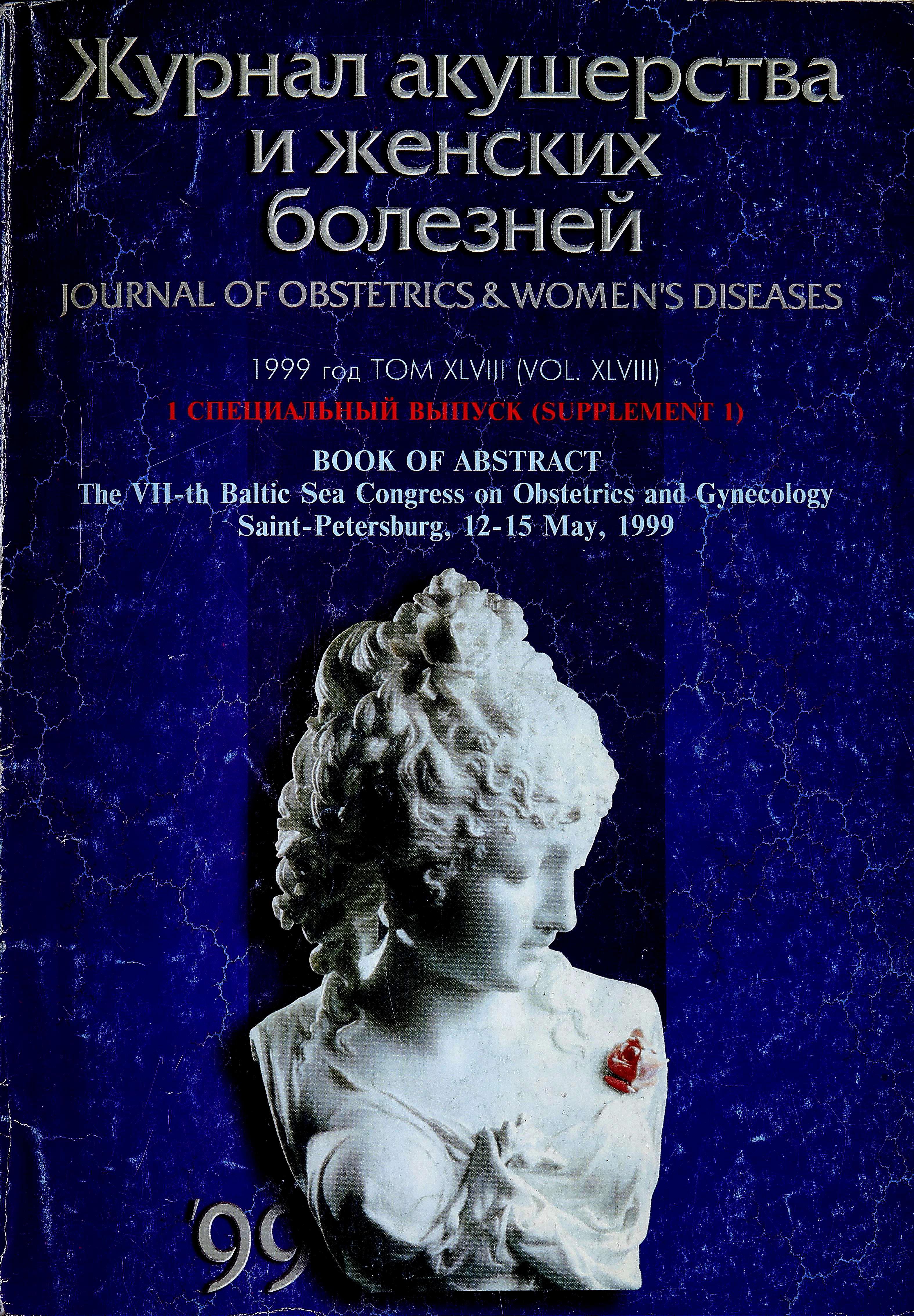Disturbances in hypothalamic regulation of reproductive function under the influence of xenobiotics
- Authors: Arutjunyan A.V.1, Stepanov M.G.1
-
Affiliations:
- D.O. Ott Institute of Obstetrics and Gynecology, Russian Academy of Medical Sciences
- Issue: Vol 48, No 5S (1999)
- Pages: 30-30
- Section: Articles
- Submitted: 15.02.2022
- Accepted: 15.02.2022
- Published: 15.12.1999
- URL: https://journals.eco-vector.com/jowd/article/view/100777
- DOI: https://doi.org/10.17816/JOWD100777
- ID: 100777
Cite item
Full Text
Abstract
Objective: The experimental study of the mechanism of non-specific character of the female reproductive system responce to xenobiotics possessing a neurotoxic (toluene, dioxane) or gonadotoxic effects (formaldehyde).
Full Text
Objective: The experimental study of the mechanism of non-specific character of the female reproductive system responce to xenobiotics possessing a neurotoxic (toluene, dioxane) or gonadotoxic effects (formaldehyde).
Methods: The gonadoliberin (GnRH) content in preoptic area of hypothalamus and medial eminence was estimated by radioimmunoassay. Biogenic amines and their metabolites were determined by HPLC with electrochemical detection, the intensity of free radicals oxidation (FRO) and total antioxidative activity - by chemiluminescent methods. The measurement of lipids and proteins peroxidation as well as activity of antioxidative enzymes (superoxide dismutase, catalase and glutathione peroxidase) has been also performed.
Results: It has been shown in experiments on Wistar female rats that changes of normal circadian rhythm of GnRH secretion are revealed as the first signs of reproductive system disfunction at chronic inhalation of toluene and dioxane, but not formaldehyde. Early disturbances in GnRH production are connected with the alterations in neurotransmitter systems controlling this process, especially in preoptic area enriched with dopaminergic and serotoninergic terminals. The circadian rhythms of FRO intensity and lipids peroxidation are also disturbed under the influence of xenobiotics, that is however lacking at comparison with proteins peroxidation and activity of antioxidant systems. This suggests about the relative stability of proteins and mechanisms of antioxidative defense towards the action of pollutants. The failure of normal rhythmicity of processes studied could be considered as a consequence of desynchronization of oscillator function of suprachiasmatic nucleus of hypothalamus and pineal gland (melatonin secretion) under the influence of xenobiotics.
Conclusion: The disturbances of circadian rhythms of regulatory processes in hypothalamus including reproductive function could be regarded as a common reaction of an organism to xenobiotics possessing a neurotoxic effect.
About the authors
A. V. Arutjunyan
D.O. Ott Institute of Obstetrics and Gynecology, Russian Academy of Medical Sciences
Email: info@eco-vector.com
Russian Federation, St. Petersburg
M. G. Stepanov
D.O. Ott Institute of Obstetrics and Gynecology, Russian Academy of Medical Sciences
Author for correspondence.
Email: info@eco-vector.com
Russian Federation, St. Petersburg
References
Supplementary files







